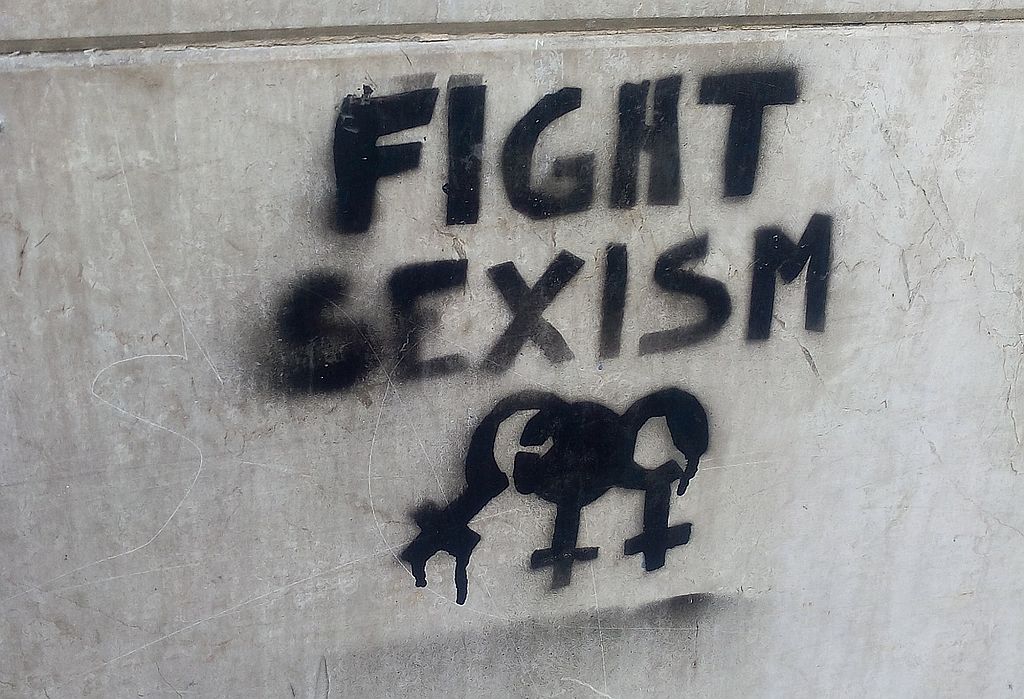Sexism

What is sexism, exactly? What is sexist writing?
Like Justice Potter Stewart, we are pretty sure we know it when we see it. And, indeed, some of it is easy to see. Women persistently denied interiority, animalized, simplified, fetishized, objectified. Women sadistically sexualized and demeaned. Women presented positively in passive roles, negatively in active. Women killed off for a lesson: the prostitute strangled and dumped behind the high school gym. Clichés, cultural vanities: the virgin, the mother-in-law, the bitch, the spinster, the jet-set heiress.
Sexism is comparative, too. How does the author treat male characters? Is the writing sexist, or misanthropic? Or is it just bad writing?
To the cultural critic, sexist representations are abhorrent because they are damaging to women. To the moral being, they are abhorrent because they dehumanize. To the artist, they are abhorrent because they are lies.
It should go without saying that an artist is frequently a cultural critic and always a moral being. But in a writer’s relationship with his art, truthfulness must be foremost; to write otherwise is to write with an agenda – that is, didactically.
Sexism is still everywhere, obviously: in the boardroom and the pool hall, the beauty parlor and the breakfast nook. All of us are sexist to a certain extent (we must not say so). Prejudice is survival instinct and human nature. This does not mean we have to yield to it. How to write truthfully about sexism, then, without inadvertently promulgating a sexist viewpoint? How to properly convey the distance between the writer’s perspective and the narrator’s? How to allow for a reader’s active free will in engaging with the work while forestalling any misunderstanding?
But this last is an impossibility – there is no way to fully control what a reader does with a text. Nietzsche begat Hitler, The Beatles begat Charles Manson, and just look what The Bible begat. All of this completely without regard for authorial intention.
In Frederick Seidel’s poem from Ooga-Booga, “The Black-Eyed Virgins,” an unmistakably sexist image appears: “a flock of Japanese schoolgirls ready to be fucked / In their school uniforms.” The tone of the speaker is predatory, fetishistic, and objectifying. But does that make the poem sexist? The poem is about a terrorist attack on a Chunnel train; the schoolgirls are supposed passengers on the train, who, in the course of the poem, become “human remains.” All of the poem’s details call attention to fetishization – the speaker fetishizes the girls’ race, age, and smallness; the suicide bombers fetishize the “black-eyed virgins” promised to them in paradise, who are also the schoolgirls. At the same time, the poem calls our attention to our own fetishization – the fetishization of the terrorist himself, his view of the afterlife, and of death. This is a poem about the intersection of fear and desire – about life “in the reign of terror,” life in the early 21st century. The poem achieves its power because it is willing to inhabit cruelty, hatred and fear in a way that a more orthodox approach could not. But it risks misinterpretation because it works implicitly – it sets the pieces in relation, and then allows the reader to determine the meaning.
In my recent writing concerned with gender, I have been purposefully cultivating ambiguity. I have attempted to subvert not only the dominant paradigms of heterosexual desire, but also the orthodox response to them. In doing so, I risk being misunderstood; I risk charges of sexism; I risk political incorrectness. But in remaining open to the uncomfortable complexities of gender I hope to honor my subject matter more fully, and represent it more truthfully.
This is Peter’s fourth post for Get Behind the Plough.
Image: Fight Sexism (Prof.lumacorno, 2016)


